A primer on the latest in the search for Flight 370
April 15, 2014 -- Updated 1640 GMT (0040 HKT)
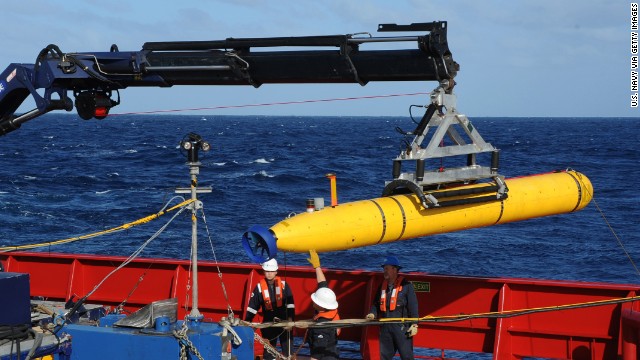
Malaysian plane sonar search cut short
What's the latest with the search?
Crews are waiting for
better weather to deploy the underwater probe being used to search for
the missing jetliner in the deep waters of the Indian Ocean. The first
stab at using the Bluefin-21 autonomous underwater vehicle ended in
disappointment Monday when it returned to the surface after encountering
waters that exceeded its 4,500-meter (14,764-foot) maximum depth. What
was supposed to be a 20-hour mission ended in less than 8, according to a
source, and found nothing.
Does that mean something's wrong with the probe?
 MH370 co-pilot's cell phone was on
MH370 co-pilot's cell phone was on
 Bluefin-21 'slower than you can walk'
Bluefin-21 'slower than you can walk'
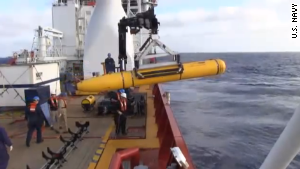 AUV aborted mission, returns early
AUV aborted mission, returns early
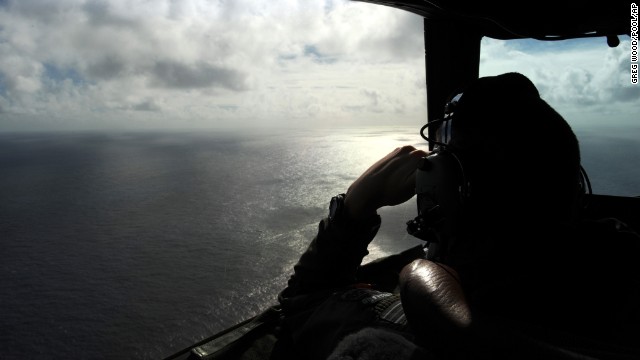 Photos: The search for Malaysia Airlines Flight 370
Photos: The search for Malaysia Airlines Flight 370
Not at all. In fact, it
did exactly what it's programmed to do when the ocean floor dips below
the probe's maximum depth, said David Gallo, director of special
projects at the Woods Hole Oceanographic Institution. "The vehicle's
tracking the floor, so when the floor dives, so does the vehicle. And
the vehicle goes, 'Uh oh, I'm not supposed to be here' and punches up,"
he said.
But what if the plane is in deeper waters?
"Well, if the Bluefin
cannot bring back the kind of sonographic images they want and the
information that they want, then they're going to have to move on to the
next level of vehicles with names like Alvin, Remora and the Sea
Dragon, and those can go deeper," said CNN aviation consultant Mary
Schiavo. "The Sea Dragon can go down to 4.4 miles, or 7,000 meters. And
that's the next step that you have to do, is go down to the level in a
different kind of vehicle."
Why aren't they listening for pings from the plane's 'black boxes' anymore?
Because the batteries
powering the boxes' locator beacons are probably dead, according to the
manufacturer and other experts. The batteries were supposed to last at
least 30 days, and the plane has now been missing for 39 days. The
batteries could have continued powering the beacons for a few more days
but almost certainly have run out by now. Searchers using devices to
listen for the pings went six days without hearing anything, so they are
now focused on the underwater search.
What happens if they find the black boxes?
The flight data
recorders, or FDRs, would be transferred to fresh water and then dried
before the data they contain would be pulled out, Schiavo said. "Then
they'll discover on the FDR what they're dealing with and how much of
the wreckage they really have to bring up to solve the mystery."
But don't hold your
breath. The Flight 370 search is often compared to the hunt for wreckage
from Air France Flight 447, which plunged into the South Atlantic Ocean
in 2009, killing all 228 people aboard. It took investigators nearly
two years to recover the black boxes in that case.
Is the surface search continuing?
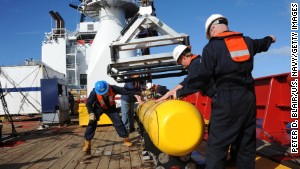 Drone sub searches for Flight MH370
Drone sub searches for Flight MH370
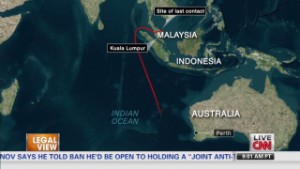 Official: MH370 co-pilot's phone was on
Official: MH370 co-pilot's phone was on
 Bluefin-21 'slower than you can walk'
Bluefin-21 'slower than you can walk'
It is, but maybe not for
much longer. As many as nine military aircraft and 11 ships
participated in the surface search Tuesday about 2,170 kilometers (1,350
miles) west of Perth, Australia, according to the country's Joint
Agency Coordination Centre. The center's director, retired Air Marshal
Angus Houston, said Monday that the surface search is likely to end in
the next few days.
Has that search turned up anything?
Searchers found an oil
slick in the area over the weekend and are shipping a 2-liter sample
back to Australia for analysis. If it's oil typically used in aircraft,
the slick could be an important lead. But it may not be. A slick found
in the early days of the search for Flight 370 turned out to be fuel oil
from a freighter.
Any other new details?
A U.S. official told CNN
on Monday that co-pilot Fariq Abdul Hamid's cell phone was on and made
contact with a cell tower in Malaysia about the time the plane
disappeared from radar.
However, the U.S.
official -- who cited information shared by Malaysian investigators --
said there was no evidence Fariq had tried to make a call.
The details do appear to
reaffirm suggestions, based on radar and satellite data, that the plane
was off course and was probably flying low enough to obtain a signal
from a cell tower, the U.S. official said.

No comments:
Post a Comment